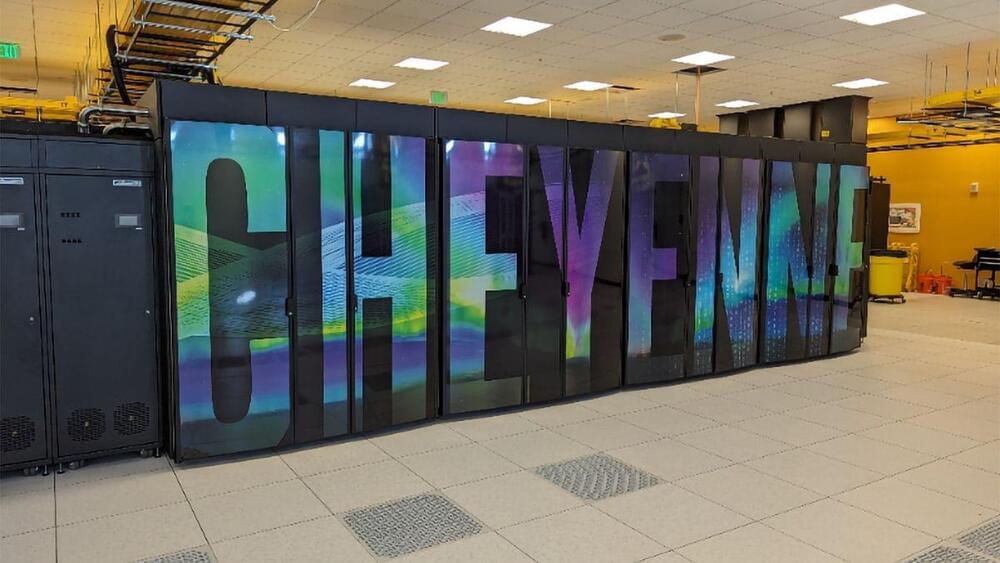Latest posts
May 1, 2024
OpenAI’s ethics forgotten? Microsoft pitches DALL-E for US military use
Posted by Raphael Ramos in categories: ethics, military, robotics/AI
According to files accessed by journalist Jack Poulson, Microsoft presented OpenAI’s DALL-E as a tool to conduct Advanced Computer Vision Training of Battle Management Systems (BMS).
A BMS is a software suite that provides military leaders with an overview of a combat situation and helps them plan troop movements, artillery fire, and air strike targets. According to Microsoft’s presentation, the DALL-E tool could generate artificial images and train BMS to visualize the ground situation better and identify appropriate strike targets.
May 1, 2024
Beautiful Nebula, Violent History: Clash of Stars Solves Stellar Mystery
Posted by Natalie Chan in category: space
When astronomers looked at a stellar pair at the heart of a stunning cloud of gas and dust, they were in for a surprise. Star pairs are typically very similar, like twins, but in HD 148,937, one star appears younger and, unlike the other, is magnetic.
New data from the European Southern Observatory (ESO) suggest there were originally three stars in the system, until two of them clashed and merged. This violent event created the surrounding cloud and forever altered the system’s fate.
“When doing background reading, I was struck by how special this system seemed,” says Abigail Frost, an astronomer at ESO in Chile and lead author of the study, “A magnetic massive star has experienced a stellar merger,” published in Science.
May 1, 2024
Scientists use Wearable Technology to Detect Stress Levels During Sleep
Posted by Natalie Chan in categories: health, wearables
What if changes in a person’s stress levels could be detected while they sleep using wearable devices? A new study by University of Vermont researchers published in PLOS Digital Health is the first to find changes in perceived stress levels reflected in sleep data—an important step towards identifying biomarkers that may help flag individuals in need of support.
Given how critical sleep is to physical and mental health, the research team suspected signals might exist in sleep data, says Laura Bloomfield, a research assistant professor of mathematics and statistics and lead author of the study. “Changes in stress are visible.”
When parsing baseline sleep data, the researchers found “consistent associations” between people’s perceived stress scores and factors such as total sleep time, resting heart rate and heart rate variability, and respiratory rate.
May 1, 2024
‘QBism’: The most radical interpretation of quantum mechanics ever
Posted by Dan Breeden in categories: mathematics, particle physics, quantum physics
Quantum mechanics, the most potent theory physicists have developed, doesn’t make sense. What I mean by that statement is that quantum mechanics — which was developed to describe the microworld of molecules, atoms, and subatomic particles — leaves its users without a common-sense picture of what it describes. Full of what seem to be paradoxes and puzzles, quantum physics demands, for most scientists, an interpretation: a way of making sense of its mathematical formalism in terms of a concrete description of what exists in the world and how we interact with it. Unfortunately, after a century not one but a basketful of “quantum interpretations” have been proposed. Which one is correct? Which one most clearly understands what quantum physics has been trying to tell us these past 100 years?
In light of these questions, I’m beginning a series that explores the most radical of all the quantum interpretations, the one I think gets it right, or at least is pointed in the right direction. It is a relative newcomer to the scene, so you may not have heard of it. But it has been gaining a lot of attention recently because it doesn’t just ask us to reimagine how we view the science of atoms; it asks us to reimagine the process of science itself.
The term “QBism” was shorthand for “Quantum Bayesianism” when this idea/theory/interpretation was first proposed in the late 1990s and early 2000s. The name hit the nail on the head because “Bayesianism” is a radical way of interpreting probabilities. The Bayesianist approach to what we mean by probability differs strongly from what you learned in school about coin flips and dice rolls and how frequently a particular result can be expected to appear. Since probabilities lie at the heart of quantum mechanics, QBism zeroed in on a key aspect of quantum formalism — one that other interpretations had missed or swept under the rug — because it focused squarely on how we interpret probabilities. We’re going to dig deep into all of this as we go along in this series, but since today’s column is supposed to be the introduction, let’s start with a 10,000-foot view of what’s at stake in the great “Quantum Interpretation Wars” so we can see where QBism fits in.
May 1, 2024
What reality does quantum theory describe? QBism has a radical answer
Posted by Dan Breeden in category: quantum physics
QBism, or Quantum Bayesianism, offers a radical interpretation of quantum mechanics, emphasizing the role of the observer.
Amazon.com: The Basic Laws of Human Stupidity: 9780385546478: Cipolla, Carlo M., Taleb, Nassim Nicholas: Books.
May 1, 2024
The Weird Experiment that Changes When Observed
Posted by Shailesh Prasad in category: quantum physics

The double-slit experiment is the strangest phenomenon in physics. Try https://brilliant.org/Newsthink/ for FREE for 30 days, and the first 200 people will get 20% off their annual premium subscription.
Watch our vid on another experiment that defies logic: • The Weird Experiment That Defies Logic (quantum entanglement)
Continue reading “The Weird Experiment that Changes When Observed” »
May 1, 2024
Scientists Say New Material Can Suck Carbon Out of Atmosphere Faster Than Trees
Posted by Shailesh Prasad in categories: climatology, computing, sustainability
A team of scientists in the United Kingdom say they’ve discovered a porous material that has the potential to store large quantities of greenhouse gases, making it a possible new tool in the arsenal to fight climate change.
The scientists detailed how they used computational models to develop this material in a newly published paper in the journal Nature Synthesis, arguing that certain features of the structure could make it excellent storage for carbon dioxide and sulphur hexafluoride, another powerful greenhouse gas.
“This is an exciting discovery because we need new porous materials to help solve society’s biggest challenges,” engineering professor Marc Little from Edinburgh’s Heriot-Watt University said in a statement about the research.

This #InternationalDanceDay, Spot is meeting another strange dog and making friends through the power of dance. Meet Sparkles!
















